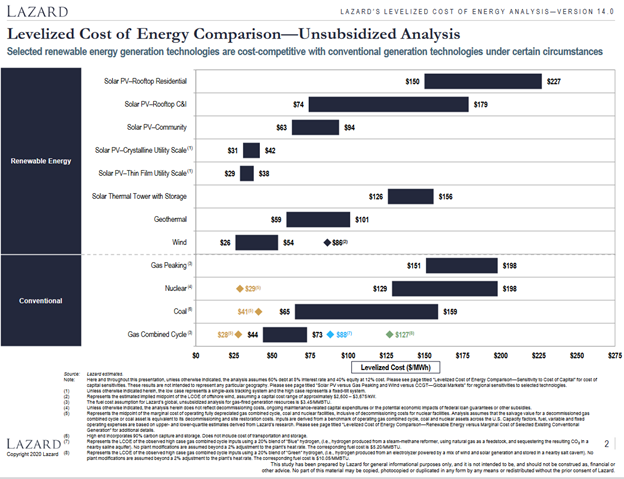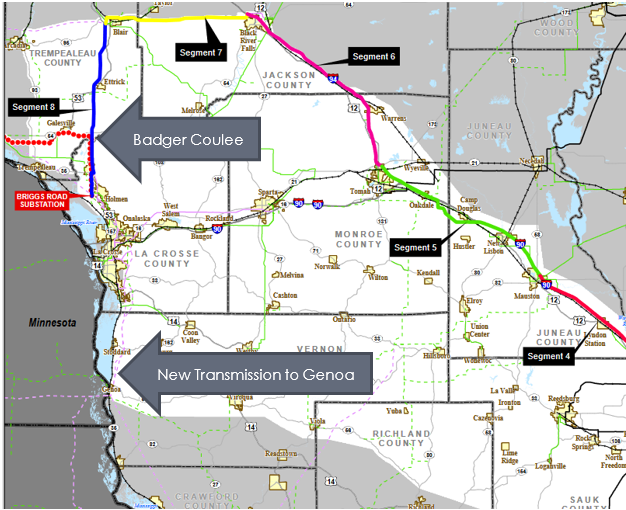
I update my electrification slides for the Wisconsin Public Utilities Institute’s Utility Basics course every year with the latest technologies, sales data, and energy, commodity, and equipment/vehicle prices. Year over year, electricity prices at my home have increased 15%, for now, based on fuel alone. That is minuscule compared to what is proposed in the Northeast. EnergyCentral.com linked to a Patch article that said Eversource Massachusetts is filing for a 38% hike on top of a 22% jump last winter. National Grid is filing for an unprecedented (in my world) “increase from last winter’s 14.82 cents per kilowatt-hour rate to 33.89 cents this winter [129%].” That price erases the expected huge fuel-price advantage electric vehicles have over gasoline-powered cars.
How does that make you feel about the stability of electrification and a heat pump grinding away at $30 per day in a brutal cold snap?
What Estimates?
Remember the chart below from Lazard? National Grid’s $34 per MWh is off the chart. Not that I blame Lazard; it is simply the reality of predicting future pricing. They predict the price to generate power, not the market price, based on scarcities of reliable baseload power.
 Ask Alice
Ask Alice
Here! Over here! I’ve been waving the flag, most recently here, that we’re going to “solar panel and battery” [verb] our way to a zero-carbon grid. That would be Alice’s Wonderland, which spawned one of my favorite stoner 60s songs, White Rabbit. That’s me – Alice, ten feet tall.
 Political and Policy Pills
Political and Policy Pills
The electric utility industry – pushed and pulled by many forces from mandates, prohibitions, and poorly conceived incentives – is hurtling toward epic mayhem. Case in point: Large, continuous duty coal plants are being replaced by solar panels, which, I don’t know, provide an illusion that they replaced what was there, along with a few jobs and a little tax base? A recent analysis I observed through my daily joy at Michaels showed that solar panels have a capacity factor of about 15%. This jibes with the Energy Information Administration analysis for the upper Midwest – the location of the study. The capacity factor is double that, but not quite 30% in sunny AZ and CA. Thirty percent will not meet the needs of a vibrant society. Nuclear power plants operate with a capacity factor of over 90%.
Time to Get Serious
The upshot is that the federal government, regional transmission organizations, states, and utilities need to get serious about a sound fleet of continuous baseload power generators that are not solely fired by natural gas. If it’s not coal, it’s nuclear. On that note, Utility Dive recently posted an article to note that a DOE analysis found that nuclear power can supply electricity for 35% less cost than greenfield projects – the solar/battery white rabbit.
The potential “always available” coal to nuclear, dubbed C2N, is 265 GW. Like the number trillion, that doesn’t seem like much but is more than the all-time electricity load records of Texas (80 GW), California (52 GW), and the Midcontinent Independent System Operator territory (127 GW) combined.
Building nuclear at scale on coal-plant sites is an excellent idea for many reasons. The transmission and switchyard facilities are already in place. Many even have additional transmission flexibility in place. For example, the Genoa power station down the river from La Crosse shut down about a year ago. A new transmission line was recently built to power that load from the Badger Coulee transmission line. See the map below.

Source: American Transmission Company (ATC)
Other coal-site infrastructure that is in place includes roads, rail, a utility workforce, and heat sinks (rivers and lakes). These sites have been in the backyards of neighbors for decades. And as Utility Dive puts it, building nuclear on these sites “may [will, with 100% certainty] provide an economic boost to disadvantaged communities.” Where have I seen an emphasis on boosting disadvantaged communities? Oh, in every RFP that is issued for our services today. A nuclear revival would deliver enormous economic development projects: permanent businesses, a soaring tax base, and new schools would abound.
Someone other than this peon [yours truly] needs the stones to champion the nuclear revival, and they need the support of everyone in our industry who wants decarbonization and electrification to become a reality. A decarbonized, electrified future has NO chance – zero – to succeed without a major nuclear buildout, unless you consider success to be an unaffordable, unreliable electricity supply with exportation of all manufacturing to dirty countries.

